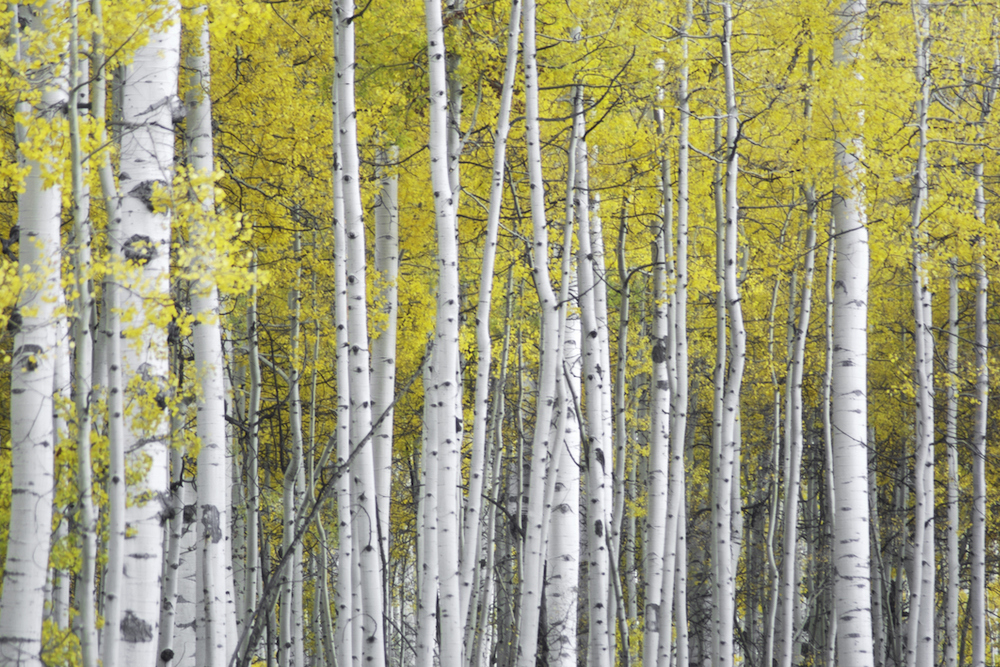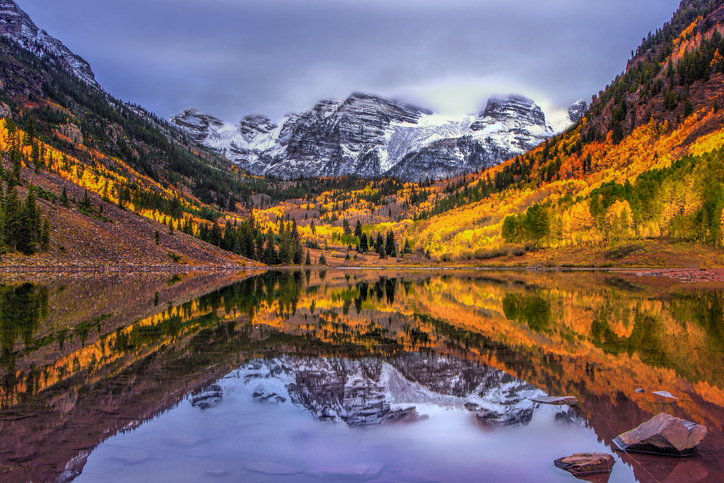Do you know what our city is named after? Our city gets its name from the quaking Aspen trees that surround us here in the valley.
We love being surrounded by Quaking Aspen Trees here at McCartney Properties. Watching the change from summer to fall is very dramatic and celebrated with driving tours, bike rides, hikes, gondola rides, and a lot of pictures taken to capture the memories of this spectacularly amazing transformation of color. We get a lot of questions about the trees, so we thought we would share some fun facts with you!
Fun Facts About Aspen Trees
What is a "Quaking" Aspen Tree?
Quaking is often referred to as the visual show and the musical sound when the iconic shaped leaves shimmer in the breeze. See if you can hear them when you come visit!
How Tall are Aspen Trees?
That's a good question! While not the tallest tree in the forest, these white-barked trees are generally about 20- 80 feet in height.
What is a Group of Aspen Trees Called?
You know, how a group of crows is a murder and a group of wolves is a pack. They have that for trees, too!
A group of Aspen trees is called a Stand. In a stand, each tree is a genetic replicate of the other or a “clone.”
Did You Know a Stand of Aspen Trees is One Single Organism?
It's true! A stand of aspen trees is connected by their roots under the soil. It is the largest single organism, by area, on Earth.That's a pretty fun fact about aspens!
Where Can You Find Aspen Trees?
Quaking Aspens are found between 5,000 to 11,500 feet. Be prepared for some elevation when you come visit!
What Color Are Aspen Trees?
Typically, they are orange, yellow, and gold. Aspen trees change color as the days get shorter. As the photosynthetic activity changes, chlorophyll disappears for these deciduous trees.
Some years the leaves seem even brighter than others, dryer weather and sunny days mean more sugars in the leaves. Too hot or too cold can both make the colors a bit dimmer.
Do Aspen Trees Change Color With the Season and Weather?
Summer and Fall weather play a major factor as to when the Aspen Trees are at their peak of color. Generally, we see the peak around the 3rd and 4th weeks of September.
Nature has a way of constantly changing in the mountains. At times, the wind blows the Aspen leaves into a whirl of color, the leaves take flight, twirling in the air, then land on the ground creating a beautiful golden path. The Aspen tree grows year-round, even under the snow.
Where's the Best Place to See Aspens?
Right here in town you can see the Quaking Aspen on the mountainsides. Many people opt for a hike in the Aspen area or a Silver Queen Gondola Ride.
Visiting Maroon Bells
Of course, if you’ve never visited the majestic Maroon Bells, you surely should plan an outing there in the fall. Visitors and photographers come from all over the world to see this special place that is so breathtaking, you really need to see it.
Keep in mind that you cannot take a car to Maroon Bells and Maroon Lake between 8 am and 5 pm. Here are suggestions for planning your day trip:
Save yourself a parking fee by walking to the Rubey Park Transit Center in downtown Aspen then hop on the free Castle/Maroon bus which will take you to the Aspen Highlands Village Parking. There you will pay a small fee to ride the Maroon Bells bus. During the 20-minute ride, you will learn about the history and geographical features of this region. Buses depart and arrive several times throughout the hour so pack a lunch, and a jacket then spend some time engulfed by the majestic beauty of the Maroon Bells-Snowmass Wilderness. The last bus leaves the Bells at 5 pm.
See the Aspen Trees When You Stay With Us at McCartney Properties!
When you’re searching for the perfect vacation rental to return home to in Aspen after a day of leaf peeping fun, look no further than McCartney Property Management.
Whether you’re looking to kick back in luxury in a luxury rental with hot tub or just want to be sure you can bring your doggo along for the trip in a pet-friendly rental, we have a wide range of amenities to choose from. We also provide long-term rentals options for those who want to stay here a while. No matter which option you choose, you can’t go wrong when you stay with McCartney. We’ve got you covered, whether you want to stay in a private home or a luxury condo!
What are you waiting for? Browse our available Aspen vacation rentals now and book your fall trip to Aspen directly with McCartney Properties!


